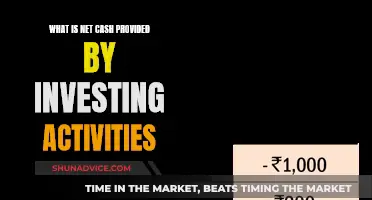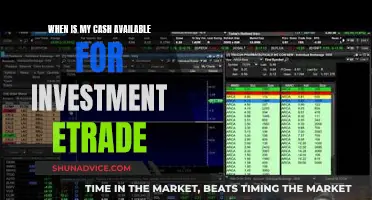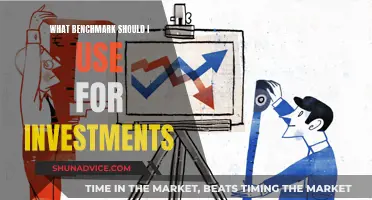
Options are complex investment tools that can be used to protect your investments. They are contracts that give buyers the right to buy or sell a stock or security at a set price at a future date. Options can be used to generate extra income and leverage gains, but they are primarily used as a method of protection for individual stocks or an entire portfolio. One way to hedge a portfolio is to take an opposing position using an index, such as the SPDR S&P 500 ETF (SPY). A put option is a financial contract that gives the holder the right to sell a certain underlying asset at a certain price on or before expiry. This is similar to buying insurance against your house burning down, where you pay the insurance premium and the options seller is like the insurance company.
| Characteristics | Values |
|---|---|
| Options as insurance | Options can be used as a form of insurance to protect investments. |
| Buying put options | Buying put options is a straightforward and simple form of hedging or limiting downside risk. |
| Reducing cost with spreads | Using spreads can reduce the cost of buying options and mitigate the impact of changes in implied volatility and time decay. |
| Combination approach | Using a combination of strategies, such as buying put spreads and selling call spreads, can provide longer-term protection. |
| Collar strategy | Combining the purchase of put options with the sale of call options can provide both upside and downside protection. |
| Protective put strategy | Buying put options can protect against large price declines and is a risk-management tool for investors. |
| Time decay | Options contracts tend to lose value over time, so time decay is a factor to consider when buying options. |
| Volatility | Implied volatility in options contracts can impact profitability and options prices. |
What You'll Learn

Buying put options
When buying put options, investors can choose from three types of options: at-the-money, out-of-the-money, and in-the-money. At-the-money options have a strike price equal to the current stock price, providing 100% protection until the option expires. Out-of-the-money options have a strike price below the current stock price and cap the investor's losses to the difference between the purchased stock price and the strike price. In-the-money options have a strike price above the current stock price.
The cost of the put option, or premium, is based on several factors, including the current price of the underlying asset, the time until expiration, and the implied volatility of the asset. Put options are typically less expensive on a relative basis than in previous years, but they can still be costly in absolute terms.
When using put options to protect investments, it is important to consider the magnitude of the expected decline and the length of time protection is needed. These factors will help determine the appropriate number of puts to buy and the strike price and expiration date to choose.
While buying put options can be an effective way to hedge against losses, it is important to remember that it comes at a cost. The premium paid for the put option will reduce the potential profit on the investment. Additionally, put options can be complex and may not be suitable for all investors. There is a risk of large losses if they are not used properly.
Cash Repayments: A Smart Investment Strategy?
You may want to see also

Using spreads
A spread in finance typically refers to the difference or gap between two related values. In stock trading, the spread generally refers to the gap between buying and selling prices. In bonds, it indicates the yield differential between two securities.
There are different types of spreads, including:
- Bull call spread: This strategy is designed for traders who expect a moderate rise in the price of the underlying asset. It involves buying a call option with a lower strike price and simultaneously selling a call option with a higher strike price, both with the same expiration date.
- Bear put spread: This strategy is used by traders who expect a moderate decline in the price of the underlying asset. It involves buying a put option with a higher strike price and selling a put option with a lower strike price, both with the same expiration date.
- Bull put spread: This is an options trading strategy used when there is a moderately bullish outlook on an underlying asset. It involves simultaneously selling a put option at a higher strike price and buying a put option at a lower strike price, with both options having the same expiration date.
- Long butterfly spread: This strategy combines call and put options to capitalize on low volatility in the underlying asset. It involves buying one in-the-money option, selling two at-the-money options, and buying one out-of-the-money option, all with the same expiration date.
- Calendar spread: This strategy, also known as a time spread, involves buying and selling options with the same strike price but different expiration dates.
- Box spread: This is an arbitrage strategy that involves creating both a bull call spread and a bear put spread on the same underlying asset, effectively creating a synthetic long or short position with no risk.
When using spreads, it is important to consider the potential risks involved, such as liquidity risk, volatility risk, and the risk of misunderstanding or mismanaging the strategy.
Warren Buffet's Berkshire Cash Reserves: Where Does it Go?
You may want to see also

Collar strategy
A collar strategy is an options strategy used to protect an investor's position from large losses, but it also limits potential gains. It involves two components: buying a put option and selling a covered call. This strategy is ideal for investors who are optimistic about a stock they own long-term but are worried about short-term volatility in the market.
The put option acts as a form of insurance, giving the investor the right to sell their shares at a predetermined price (the strike price). If the stock price falls beyond the strike price, the value of the put option increases, helping to offset losses on the shares.
The covered call involves selling a call option that gives someone the right to buy the investor's shares at a specific strike price, in exchange for a premium upfront. This limits the investor's upside potential, but the premium earned can act as a steady income stream to offset the cost of the put option.
Together, these two options create a "collar" around the stock price, capping both potential upside and downside. This strategy is particularly useful for retirees who want to protect their portfolios from significant losses while still allowing for some income generation.
The collar strategy is best suited for investors who are comfortable with options trading and are looking for a defined range of risk and reward. It is also a good choice for those who are moderately bullish or neutral on a stock and want to hedge against potential downside risk without incurring high costs.
However, it is important to note that the collar strategy does cap upside gains if the underlying asset continues to rise past the call's strike price. Additionally, if the stock price does not fall to the put strike price level, the put option's cost may be unnecessary.
Free Cash Flow: Investment Costs and Their Inclusion
You may want to see also

Time decay and volatility
Time decay is a critical factor in options trading. It refers to the reduction in an option's value as its expiration date approaches. This is represented by the Greek letter theta, which measures the rate of change in an option's time value as it nears expiry. Time decay accelerates as the expiration date draws closer, with the most significant decay occurring in the final month before expiration.
The time value of an option is influenced by the amount of time remaining until expiration. Options with longer durations have higher time values because there is a greater probability of the option becoming profitable. However, as time passes and the option remains unprofitable, time decay accelerates, and the option's value declines.
Intrinsic and extrinsic values are key components in options pricing, and both are affected by time decay. The intrinsic value of an option is the difference between the market price of the underlying security and the strike price of the option. A call option with a strike price of $20 and an underlying stock trading at $30 would have an intrinsic value of $10, representing the minimum built-in profit. On the other hand, extrinsic value is more complex and relates to the impact of time on an option's value. It considers the time remaining until expiration and the rate of time decay. Options with longer durations have higher extrinsic values because there is more time for the option to become profitable.
Understanding time decay is crucial for options traders to effectively manage potential profits and losses. Traders who buy options with the intention of holding them until expiration may not be as concerned about time decay, as they are hoping for significant movement in the underlying security to offset any loss in extrinsic value. However, traders who plan to close their options position before expiration should be more mindful of time decay, as the potential profit from intrinsic value decreases, while the potential loss of extrinsic value becomes more significant.
Volatility also plays a crucial role in options trading. Implied volatility refers to the expected volatility of the underlying security over the option's life. When implied volatility is high, options become more expensive. Therefore, it is important to consider volatility when purchasing options to protect investments. Buying options during periods of high implied volatility can be more costly, impacting the overall profitability of the trade.
In summary, time decay and volatility are essential factors to consider when using options to protect investments. Time decay refers to the loss of value in an option as it approaches expiration, while volatility affects the pricing of options. By understanding and effectively managing these factors, options traders can make more informed decisions and potentially enhance their investment outcomes.
Cash Flows: Investment Decision-Making's North Star
You may want to see also

Using index ETFs
Index funds and exchange-traded funds (ETFs) have been instrumental in investing over the past few decades, offering low-cost ways for individuals to gain broad market exposure. Index funds track the performance of a specific market index, such as the S&P 500 for large US stocks or the Bloomberg US Aggregate Bond Index for bonds.
Index mutual funds are priced once daily after the market closes, and investors buy or sell shares directly from the fund company. In contrast, ETFs are more akin to equities than mutual funds and are highly liquid. They can be bought and sold like stock shares throughout the trading day, with prices fluctuating constantly.
Index ETFs have seen substantial growth, with total net assets reaching $5.4 trillion at the end of 2023, representing a significant part of the ETF market. The SPDR S&P 500 (SPY), launched in 1993 to track the S&P 500 Index, is the oldest surviving and largest ETF with annual returns of 8.21% since 2000.
ETFs can be a good option for investors who want to protect their investments. Here are some reasons why:
Broad Diversification
Most index funds provide exposure to hundreds or thousands of securities in a single financial product, offering instant diversification. For example, a share of an S&P 500 index fund provides ownership in hundreds of companies, reducing risk compared to owning a few individual stocks.
Low Expenses
Index funds generally have lower expense ratios than actively managed funds because they require less extensive research and trading. At the end of 2023, the asset-weighted average expense ratio for index equity mutual funds was 0.06%, compared to 0.66% for actively managed equity mutual funds.
Passive Management
Index funds aim to replicate the performance of their target index rather than outperform it, which results in lower costs.
Predictability
While index funds won't outperform their benchmark, they also won't significantly underperform, providing more predictable returns.
Tax Efficiency
Index ETFs are often more tax-efficient than index mutual funds due to their structure, which minimizes capital gains distributions.
Lower Minimum Investments
Investors can often buy as few as one share of an ETF, and some brokers allow the purchase of fractional shares.
Strong Long-Term Performance
Over time, indexes like the S&P 500 have made solid returns, with an average annual return of about 10%.
Accessibility
ETFs are more accessible to retail investors because they trade like shares of stock on exchanges.
Lower Fees
ETFs tend to have lower fees than mutual funds, making them a cost-effective option for investors.
- Vanguard S&P 500 ETF (VOO)
- SPDR S&P 500 ETF Trust (SPY)
- IShares Core S&P 500 ETF (IVV)
- Vanguard Russell 2000 ETF (VTWO)
- Vanguard Total Stock Market ETF (VTI)
A Windfall's Wise Investment: Strategies for Sudden Cash
You may want to see also
Frequently asked questions
A protective put is a contract that allows you to sell a certain number of shares of stock (usually 100) on or before a chosen date and at a predetermined price, known as the strike price.
If the price of the stock drops, the put option contract will likely gain value, offsetting the losses in the stock.
A protective put can help limit your downside risks and provide temporary protection for your stocks.
Yes, there is an initial cost called a premium, and there is a strong chance of losing the entire premium if the stock price increases rapidly.
The strike price affects the amount of time decay and overall protection the option provides. A lower strike price is cheaper but offers less protection, while a higher strike price may provide more protection but at a higher cost.







